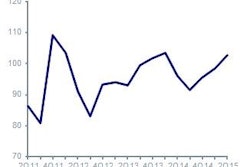
According to the U.S. Census Bureau, e-commerce sales were up more than 14 percent in the first quarter of 2015 in comparison to the first quarter of 2014. This is consistent with the steady increase in the percentage of overall sales being made online since 2006.
If you want to compare that to the number of sales made over the phone, you have to dig deep and navigate around what the search engines think you’re looking for. If you Google statistics for phone sales, you get results on which cell phones are selling the best or the number of people who ordered something online from their phone. Phone calls, while not obsolete, are dwindling more and more in all areas of life, retail included.
Reasons
Why the change? It depends on who you talk to … sometimes literally. What began as something of a novelty for early adopters is now commonplace, as smartphones and tablets make online access even more convenient for users. That guy sitting across from you in the boardroom who looks like he’s intensely responding to an urgent email could just as easily be ordering concert tickets. The teenager the teacher chastised for texting was actually ordering a pizza. There is a novelty to ordering something customized for you without ever saying a word.
Generations with Spending Power
The upcoming generation with spending power, Generation Y, grew up on digital devices. They would rather text on their phones than talk, so placing orders over the phone may not even cross their mind. This is the same generation that may or may not remember phone books. As this generation and the next to follow become adults with spending power, the number of online sales will continue to increase simply because of who is doing the purchasing.
Minimizing Miscommunication
Depending on the cell phone service provider and the location of the person on the phone, phone orders can be just as misinterpreted as drive-through intercoms. Simply put, phone calls increase the chances of misunderstanding what the caller said. Whether the customer service representative struggles to understand a southern drawl or the customer has difficulty understanding the international accent prevalent at the call center, phone calls allow for a he said/she said situation that doesn’t bode well for retail.
Digital Paper Trail
Along those same lines, online ordering provides a digital paper trail of sorts that shows exactly what you said or typed. A phone order may end with a confirmation number, but you can’t be sure what that number confirms until you receive the order.
Visible Options
People, especially Americans, like options. When an individual places a phone call to his favorite pizza maker, he may ask the representative dozens of questions before finally placing the order. Do you have a gluten-free option? What sauces do you offer? What comes on the supreme? The employee who answered the phone is also supposed to be making pizzas, so something is going to get neglected in this process. However, if the same individual places the order online, he can see the full menu right in front of him and order without distracting the pizza maker.
24-Hour Access
Is the mall closed? No worries. You can just shop online overnight and pick it up in the store tomorrow or, better yet, have it delivered to your door. Twenty-four hour access means consumers have more hours each day to spend money. Retailers in the past tried using call centers to provide the same service, but it didn’t pan out well. The call centers were usually outsourced overseas, creating the aforementioned accent challenge, or the first half of the phone call was automated, defeating the purpose of calling instead of ordering online anyway.
From a retailer’s perspective, the move away from phone-in orders to online orders means no longer having to staff a call center. Automation is less expensive and often times more reliable.
What It Means for Retailers
To maximize the opportunities associated with the shift to e-commerce, retailers need to get their ducks in a row or lose customers to the competitors who did.
Consider your Target Demographic
If you sell walk-in bathtubs and Hoverounds, you may need to keep the call center staffed for another decade or two. On the other hand, if you sell skateboards, you probably don’t even need to put a phone number on your website. Know your target market.
Integration across Platforms
Phone orders may be on the decline, but people still shop in stores. The most successful retailers integrate the sales across multiple platforms by using the right software and point-of-sale systems. Those point-of-sale systems should provide real-time inventory updates so you don’t sell the last item in stock to a customer in the store, while someone online is trying to purchase the same item.
Order Fulfillment and Logistics
You may have the best product on the market with the sleekest looking website the digital age ever saw, but if you can’t get the orders from your warehouse to the customer, it doesn’t matter. The online order is only the first half of the transaction. Retailers must also provide options for the customers to receive that order. This may mean hubs in strategic locations across the nation (a la Amazon) to make same-day delivery more viable or it may mean giving the customer the option to pick up the item in store.
Whether they phone them in or let their digits do the talking, your primary goal is still to make customers happy. If consumers want to enter the information of their order themselves, by all means, let them.
David Bozin is the vice president of growth and business development at Bindo. For more information, please visit https://bindo.com/.














![Pros To Know 2026 [color]](https://img.sdcexec.com/mindful/acbm/workspaces/default/uploads/2025/08/prostoknow-2026-color.mduFvhpgMk.png?ar=16%3A9&auto=format%2Ccompress&bg=fff&fill-color=fff&fit=fill&h=135&q=70&w=240)
